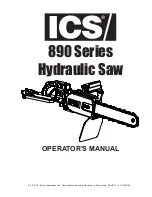
S
MS216.V2 Issue:1 18/03/21
Original Language Version
© Jack Sealey Limited
Sealey Group, Kempson Way, Suffolk Business Park, Bury St Edmunds, Suffolk. IP32 7AR
01284 757500
01284 703534
www.sealey.co.uk
ENVIRONMENT PROTECTION
Recycle unwanted materials instead of disposing of them as waste. All tools, accessories and packaging should be sorted, taken to
a recycling centre and disposed of in a manner which is compatible with the environment. When the product becomes completely
unserviceable and requires disposal, drain any fluids (if applicable) into approved containers and dispose of the product and fluids
according to local regulations.
Note
: It is our policy to continually improve products and as such we reserve the right to alter data, specifications and component parts without prior
notice. Please note that other versions of this product are available. If you require documentation for alternative versions, please email or call
our technical team on [email protected] or 01284 757505.
Important
: No Liability is accepted for incorrect use of this product.
Warranty
: Guarantee is 12 months from purchase date, proof of which is required for any claim.
WEEE REGULATIONS
Dispose of this product at the end of its working life in compliance with the EU Directive on Waste Electrical and Electronic Equipment
(WEEE). When the product is no longer required, it must be disposed of in an environmentally protective way. Contact your local solid
waste authority for recycling information.
6.9.
CUTTING
6.9.1.
To start the saw, unlock the blade, as in section 6.1. and depress the On/Off trigger in the handle (fig.1.1).
6.9.2.
When using the sliding function, raise the head and pull forward. Lower the blade through the work and push back slowly to create
the cut.
6.9.3.
When the cut is complete, release the operating handle and wait for the blade to stop before removing the work.
7. MAINTENANCE
7.1.
BLADE CHANGING
7.2.
WARNING:
DO NOT
use any blade other than those recommended for this machine.
▲
DANGER - ALWAYS
disconnect the machine from the electric supply before attempting any maintenance or cleaning.
7.2.1.
Lock both sliding locks to stabilise the head.
7.2.2.
Raise and lock the head.
7.2.3.
Loosen the cap screw which secures the moving blade guard (fig.8) until the moving guard is released.
7.2.4.
Loosen the cross head screw that holds the blade guard in place in order that the plate can be rotated.
7.2.5.
Pull the guard release lever (fig.10) and lift the moving guard to reveal the blade screw (fig.9).
7.2.6.
Engage the spindle lock (fig.10) and, using a hex key, undo the bolt holding the saw blade (fig.9).
NOTE:
This is a left-hand thread.
7.2.7.
Remove the external washer and blade.
7.2.8.
Smear the inner faces of the washers with a small amount of oil and mount the new blade on the spindle between the washers.
7.2.9.
Ensure that the new blade is fitted with direction of rotation matching the arrow on the blade guard.
7.2.10.
T
ighten the blade securing nut and refit the guard, checking that it has full and free movement.
7.2.11.
Run the machine to check that the blade is true.
7.3.
GENERAL MAINTENANCE
7.3.1.
Check all fastenings at regular intervals and tighten if necessary.
7.3.2.
Pay particular attention to the blade screw, ensuring that the nut is tight.
7.3.3.
Lubricate the slides lightly at regular intervals.
7.3.4.
Check that the blade is perpendicular, as in section 6.3., at regular intervals.
7.4.
CLEANING
7.4.1.
Keep the ventilation grilles clear of dust. Clean with a soft brush regularly.
7.4.2.
Brush sawdust and wood chips from the bed and head regularly.
7.4.3.
Clean the motor housing with a moist, soapy cloth.
DO NOT
use abrasive or solvent cleaners.
fig.8
fig.10
fig.9
Guard
Release
Lever
Spindle
Lock























